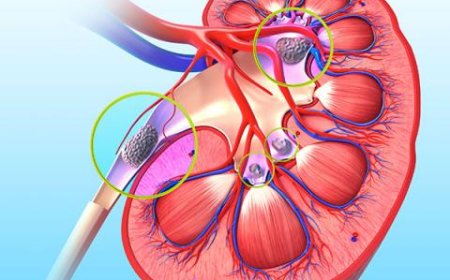How to Zip-Line at the Sandia Peak Albuquerque
How to Zip-Line at the Sandia Peak Albuquerque Zipping through the sky above the Sandia Mountains is more than just an adrenaline rush—it’s a transformative way to experience the natural beauty of Albuquerque, New Mexico. The Sandia Peak Zip Line, nestled within the scenic Sandia Peak Tramway complex, offers one of the most unique aerial adventures in the Southwest. Unlike urban zip lines or fores
How to Zip-Line at the Sandia Peak Albuquerque
Zipping through the sky above the Sandia Mountains is more than just an adrenaline rush—it’s a transformative way to experience the natural beauty of Albuquerque, New Mexico. The Sandia Peak Zip Line, nestled within the scenic Sandia Peak Tramway complex, offers one of the most unique aerial adventures in the Southwest. Unlike urban zip lines or forest canopy tours, this experience combines breathtaking desert-mountain vistas, high-altitude thrills, and a seamless integration with one of the world’s longest aerial trams. Whether you’re a seasoned outdoor enthusiast or a first-time thrill-seeker, learning how to zip-line at Sandia Peak requires more than just courage—it demands preparation, awareness, and respect for the environment and safety protocols. This comprehensive guide walks you through every step of the process, from planning your visit to returning to solid ground with unforgettable memories.
Step-by-Step Guide
1. Research and Plan Your Visit
Before you even pack your gear, begin by researching the operational schedule of the Sandia Peak Zip Line. Unlike many seasonal attractions, this zip line operates primarily from spring through fall, with limited winter availability depending on snow conditions. Visit the official Sandia Peak Tramway website to confirm current hours, weather-related closures, and booking availability. Weekends and holidays are typically the busiest, so plan your visit mid-week if possible for shorter wait times and a more tranquil experience.
Check the weather forecast for Albuquerque and the Sandia Mountains. High winds, thunderstorms, or heavy fog can lead to temporary closures for safety reasons. The elevation at the top station exceeds 10,000 feet, so temperatures can be significantly cooler than in the city below—even in summer. Layered clothing is essential.
Also, review the physical requirements. Most zip line operators require participants to be between 70 and 250 pounds, and all riders must be at least 10 years old. Minors must be accompanied by a legal guardian. If you have any medical conditions—especially heart issues, back injuries, or pregnancy—consult your physician before booking. The ride involves standing, walking on uneven terrain, and being securely harnessed, so mobility is a key factor.
2. Book Your Reservation
Reservations are mandatory. Walk-ins are rarely accommodated due to limited capacity and safety staffing requirements. Book your slot online through the official Sandia Peak Tramway portal. You’ll be asked to select a date, time, and zip line package. There are typically two options: the single zip line experience and the multi-line adventure package, which includes additional lines and extended aerial time.
During booking, you’ll provide your name, contact details, weight, and emergency contact. You may also be asked to sign a digital waiver acknowledging the inherent risks of the activity. Read it carefully—this is a legally binding document that confirms your understanding of safety procedures and your voluntary participation.
Payment is required in full at the time of booking. Most operators accept major credit cards, but cash is not accepted for online reservations. Keep your confirmation email accessible on your phone or printed out—you’ll need it for check-in.
3. Arrive Early and Prepare
Plan to arrive at least 45 minutes before your scheduled time. The Sandia Peak Tramway is located approximately 15 miles northeast of downtown Albuquerque, and traffic, especially on weekends, can cause delays. Parking is available at the base station, but it fills quickly. Carpooling or using a rideshare service is recommended.
Once you arrive at the base station, proceed to the check-in counter. Bring your confirmation email or reservation number, a valid photo ID, and appropriate clothing. Avoid loose jewelry, scarves, or dangling accessories. Secure long hair in a ponytail or bun. Wear closed-toe shoes with good grip—sandals, flip-flops, or high heels are strictly prohibited. The terrain includes gravel paths, metal platforms, and elevated walkways.
Leave non-essential items in your vehicle or use the secure lockers provided. Cameras and phones are permitted but must be secured with a wrist strap or chest harness. The operators will provide you with a helmet and full-body harness, so don’t bring your own unless it’s certified by the Association for Challenge Course Technology (ACCT).
4. Attend the Safety Briefing
After check-in, you’ll be grouped with other participants and led to a designated safety orientation area. This is not optional. Every participant, regardless of experience, must attend the full briefing. Trained guides will demonstrate how to properly wear the harness, how to attach and detach from the safety line using the auto-locking carabiners, and how to maintain the correct body position during flight.
You’ll learn the “ready, set, go” signals used by guides to initiate your launch. You’ll also be taught how to brake using your gloved hand on the lanyard—this is critical for a smooth, controlled stop at the landing platform. Practice maneuvers are performed on a low, ground-level line before you ascend.
Guides will also review emergency protocols. What to do if you get stuck mid-line? How to signal for help? What to expect if weather changes mid-tour? These questions are addressed thoroughly. Don’t hesitate to ask clarifying questions—your safety depends on full comprehension.
5. Ride the Tram to the Summit
After the briefing, you’ll board the Sandia Peak Tramway. This isn’t just transportation—it’s part of the experience. The 2.7-mile aerial tram ascends over 4,000 feet in just 15 minutes, offering panoramic views of the Rio Grande Valley, the city of Albuquerque, and the vast expanse of the Sandia Mountains. Watch for wildlife—bighorn sheep and golden eagles are often spotted near the upper station.
At the top station, exit the tram and follow signs to the zip line departure area. The platform is open-air and exposed to wind, so stay close to the railings and listen carefully to your guide’s instructions. You’ll be fitted with a final safety check: harness straps tightened, helmet secured, gloves distributed, and carabiners double-checked by two staff members.
6. Begin Your Zip Line Journey
The first zip line typically begins with a short walk to the launch platform. Your guide will connect your harness to the overhead cable using a pulley system with dual safety backups. You’ll be instructed to stand with feet shoulder-width apart, lean slightly back, and keep your arms relaxed.
On the guide’s signal—“Ready? Set? Go!”—you’ll step off the platform. The initial drop is exhilarating but controlled. You’ll accelerate quickly, then glide smoothly across the canyon. The entire line is approximately 800 feet long and takes about 20–30 seconds to complete. You’ll feel the wind rush past you as the mountains rise on either side and the valley stretches below.
As you approach the landing platform, you’ll be instructed to lift your legs slightly and extend your arms forward to slow your momentum. Your guide will be waiting to help you disengage from the line and step safely onto the platform. Do not attempt to jump or stop abruptly—trust the system and your guide.
7. Complete Additional Lines (If Applicable)
If you’ve booked the multi-line package, you’ll continue to the next launch point via a short hiking trail or elevated walkway. Each subsequent line varies in length, speed, and elevation drop. Some lines cross over ravines, others offer near-horizontal glides with sweeping views. The final line is often the longest and fastest, providing a dramatic finale.
Between lines, your guide will re-attach your harness, check equipment, and offer encouragement. Take a moment to breathe, enjoy the scenery, and appreciate the engineering behind the system. The cables are made of aircraft-grade stainless steel, anchored into bedrock, and inspected daily by certified technicians.
8. Return to the Base
After completing all zip lines, you’ll be escorted back to the tram station. Your harness and helmet will be removed and returned to staff. You’ll have the opportunity to purchase photos or video footage taken during your ride—many guests consider these priceless keepsakes.
Board the tram for the descent. As you glide back down, reflect on your experience. The views from above are even more stunning now that you’ve experienced the thrill from within them.
9. Post-Adventure Care
Once back at the base, hydrate thoroughly. The high altitude and physical exertion can lead to mild dehydration. Avoid alcohol immediately after your ride—your body is still adjusting to the elevation change.
If you experience any dizziness, nausea, or muscle soreness, rest in a shaded area. Most discomfort fades within an hour. If symptoms persist, seek medical attention. The tramway staff can direct you to nearby clinics if needed.
Leave no trace. Pick up any personal items you may have dropped. The Sandia Mountains are a protected natural area, and preserving their integrity is vital.
Best Practices
1. Prioritize Safety Over Speed
The most common mistake zip-liners make is trying to go faster or more dramatically than the system allows. The zip line is engineered for controlled, safe travel—not acrobatics. Do not swing, spin, or attempt to grab the cable. Follow your guide’s instructions exactly. Your safety is not a suggestion—it’s a requirement.
2. Dress for the Conditions
Temperatures at 10,000 feet can drop 20–30 degrees Fahrenheit compared to Albuquerque’s valley floor. Even on a sunny day, wind chill can make it feel colder. Wear moisture-wicking base layers, a light insulating mid-layer, and a wind-resistant outer shell. Gloves are provided, but bringing your own thin, grippy gloves can enhance comfort.
3. Hydrate and Fuel Properly
High-altitude activity increases your body’s need for water and energy. Drink at least 16 ounces of water before your ride. Eat a light, balanced meal 1–2 hours beforehand—avoid heavy, greasy foods. A banana, granola bar, or yogurt with fruit are ideal. Don’t ride on an empty stomach.
4. Respect the Environment
The Sandia Mountains are home to rare plant species, nesting birds, and sensitive ecosystems. Stay on designated paths. Do not touch or disturb vegetation. Avoid loud noises that could disrupt wildlife. The zip line system was designed to minimize environmental impact—your cooperation ensures it remains sustainable.
5. Manage Expectations
Some visitors expect a Hollywood-style, high-speed freefall. The Sandia Peak Zip Line is not a roller coaster. It’s a serene, scenic glide that emphasizes safety, control, and immersion in nature. The thrill comes from the perspective, the height, and the quiet majesty of the landscape—not from extreme G-forces.
6. Photograph Responsibly
If you’re bringing a camera or phone, use a secure strap. Do not attempt to take photos while in motion unless you’ve been trained to do so. The guides often offer professional photography packages that capture your expression mid-flight—these are far safer and higher quality than amateur shots.
7. Travel with a Group
While solo travelers are welcome, coming with friends or family enhances the experience. You’ll share laughter, encouragement, and memories. Group bookings often receive slight discounts and priority boarding.
8. Know Your Limits
If you feel anxious, claustrophobic, or physically unwell at any point, speak up. Guides are trained to assist nervous participants and can pause the ride, offer reassurance, or even escort you back down if necessary. There’s no shame in stepping aside. The goal is to enjoy the experience, not to force yourself through fear.
Tools and Resources
Official Website
The Sandia Peak Tramway’s official site (sandiapeak.com) is your primary resource. It includes real-time weather updates, live webcam views of the summit, booking calendars, downloadable safety guides, and frequently updated FAQs. Bookmark this page and check it 24–48 hours before your visit.
Mobile App
The Sandia Peak Tramway mobile app offers push notifications for weather-related closures, interactive trail maps, and photo galleries from previous riders. Download it before your trip to access offline content.
Weather Tools
Use the National Weather Service’s Albuquerque forecast (weather.gov/abq) and the Mountain Forecast tool (mountain-forecast.com) for elevation-specific conditions. Wind speed above 25 mph typically triggers zip line closures. Check the 10,000-foot elevation layer specifically.
Gear Recommendations
- Footwear: Hiking boots or trail runners with ankle support
- Outerwear: Lightweight windbreaker or softshell jacket
- Accessories: UV-blocking sunglasses, sunscreen (SPF 50+), lip balm with SPF
- Hydration: Reusable water bottle (500ml minimum)
- Optional: GoPro with chest mount, compact camera with wrist strap
Training and Certification Resources
For those interested in the technical side of zip line design and safety, the Association for Challenge Course Technology (ACCT) provides publicly accessible standards and training materials. Their website (acctinfo.org) offers insight into the engineering principles behind the Sandia Peak system.
Local Guides and Tours
Several Albuquerque-based adventure companies offer guided combo packages that include the zip line, tram ride, and a guided nature walk at the summit. These are excellent for first-timers who want context and storytelling alongside the thrill. Look for operators with ACCT or ASTM certification.
Photography and Media
The official photo service captures high-resolution images from multiple angles during your ride. You’ll receive a link to download your photos within 24 hours. Many guests also use the tram’s onboard cameras to record the ascent and descent—these make for compelling social media content.
Real Examples
Example 1: The First-Time Adventurer
Maria, 32, from Santa Fe, had never been on a zip line before. She booked the single-line package after seeing photos on Instagram. She was nervous about heights but loved the idea of seeing Albuquerque from above. Her guide, Javier, spent extra time explaining the harness system and practiced the “ready, set, go” signal with her on the ground. When she launched, she screamed—not out of fear, but pure joy. “It felt like flying,” she later wrote in a review. “I didn’t want it to end.” She returned six months later with her parents for the full multi-line experience.
Example 2: The Family Outing
The Rodriguez family—parents and two children, ages 12 and 14—booked a mid-week slot in late May. They arrived early, ate breakfast at the tramway café, and watched the tram ascend before their turn. The younger child was initially hesitant but was encouraged by the guide’s enthusiasm and the sight of other kids laughing mid-flight. After completing three lines, the whole family hugged on the landing platform. “We’ve done theme parks, hiking, museums,” said the father. “This was the only thing that made us all feel like we were truly connected—to each other and to the land.”
Example 3: The Photography Enthusiast
Daniel, a professional landscape photographer from Denver, came to Sandia Peak specifically to capture aerial shots. He used a drone for summit views but rode the zip line to get ground-level perspective of the cables against the mountain backdrop. He documented the entire process in a 15-minute video, which later won a regional outdoor photography award. “The zip line gave me access to angles no drone could replicate,” he said. “The human element—the harness, the gloves, the moment of launch—added emotional depth to the imagery.”
Example 4: The Repeat Visitor
Every summer, Linda, a retired teacher from Albuquerque, returns to zip-line at Sandia Peak. She’s done it over 12 times. “It’s not about the adrenaline anymore,” she explains. “It’s about the quiet. The wind. The way the light hits the canyon at 4 p.m. I come to remember that I’m small in the grand scheme—and that’s a good thing.” She now brings her grandchildren and teaches them to identify the birds they see from above.
FAQs
Can I zip-line if I’m afraid of heights?
Yes. Many participants experience fear of heights. The harness system is designed to make you feel secure, and guides are trained to support nervous riders. Focus on your breathing, listen to your guide, and look at the horizon—not down. Most people find their fear diminishes once they’re airborne.
Is the zip line safe for seniors?
Many guests over 70 participate regularly. As long as you’re in good physical health, have no recent surgeries, and can walk on uneven terrain, you’re eligible. The ride is low-impact and controlled. Consult your doctor if you have concerns about balance or cardiovascular health.
Do I need to be physically fit?
You don’t need to be an athlete, but you should be able to stand for 15–20 minutes, walk short distances on gravel or stairs, and follow verbal instructions. The activity is not strenuous, but it does require basic mobility.
What happens if it rains or winds pick up?
Operations are suspended during rain, thunderstorms, or sustained winds above 25 mph. Safety is non-negotiable. If your ride is canceled due to weather, you’ll receive a full refund or the option to reschedule.
Can I bring my dog?
No. Pets are not permitted on the tram or zip line premises, except for certified service animals. They are not allowed on the platforms or in the launch areas due to safety and environmental regulations.
Are there restrooms at the top?
Yes. The summit station has ADA-compliant restrooms and handwashing stations. There are also water fountains and a small café offering snacks and beverages.
How long does the entire experience take?
Plan for 2.5 to 3 hours total: 45 minutes for check-in and briefing, 15 minutes for the tram ride up, 60–90 minutes for the zip lines themselves, and 15 minutes for the descent. Add extra time if you plan to eat or take photos.
Can I wear glasses or contact lenses?
Yes. Secure your glasses with a strap. Most guests wear contacts without issue. The wind is strong but not enough to dislodge properly fitted lenses.
Is tipping the guides expected?
Tipping is not required but appreciated. Guides work hard to ensure your safety and enjoyment. A tip of 10–15% is common if you feel your experience was exceptional.
What’s the best time of day to go?
Early morning (8–10 a.m.) offers the calmest winds, clearest views, and fewest crowds. Late afternoon (3–5 p.m.) provides golden-hour lighting and cooler temperatures. Avoid midday in summer when UV exposure and heat are highest.
Conclusion
Zipping across the Sandia Peak canyon is not merely an activity—it’s a profound encounter with nature, engineering, and personal courage. The experience transcends the thrill of speed; it offers a rare vantage point, a moment of stillness amid motion, and a deepened appreciation for the landscapes we often overlook. By following the steps outlined in this guide, you’re not just preparing to ride a zip line—you’re preparing to engage with one of New Mexico’s most remarkable natural theaters.
Remember: preparation is your ally. Respect the system, listen to the guides, and embrace the quiet awe that comes with soaring above ancient mountains. Whether you’re seeking adrenaline, connection, or simply a new perspective, the Sandia Peak Zip Line delivers more than you expect.
As you stand on that launch platform, feeling the wind and the harness and the vastness below, know this—you’re not just a tourist. You’re a participant in a rare, fleeting moment of human harmony with the wild. And that’s worth every step of the journey.






























